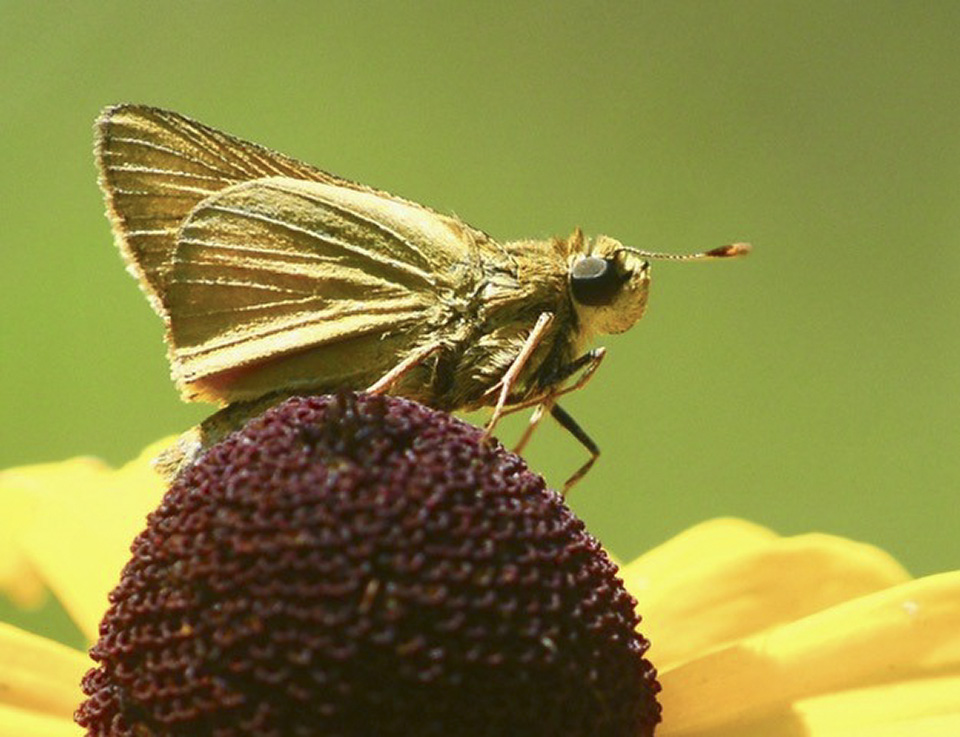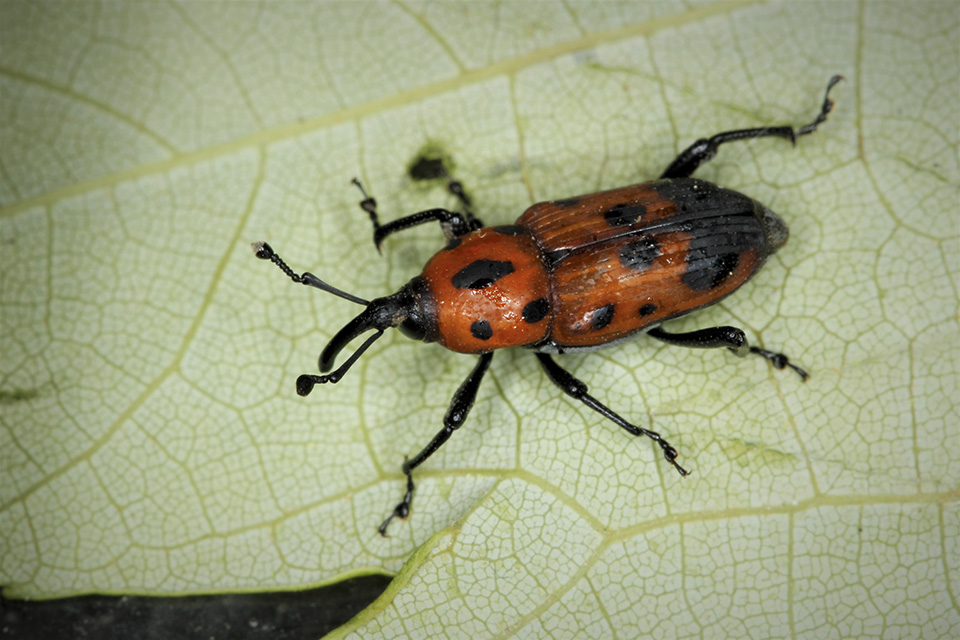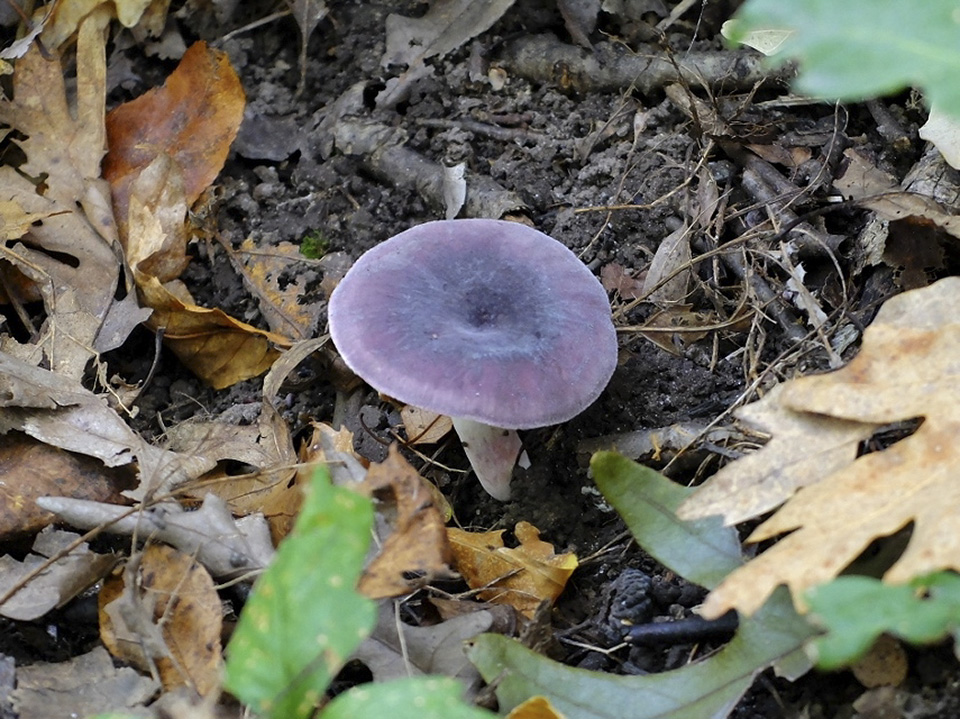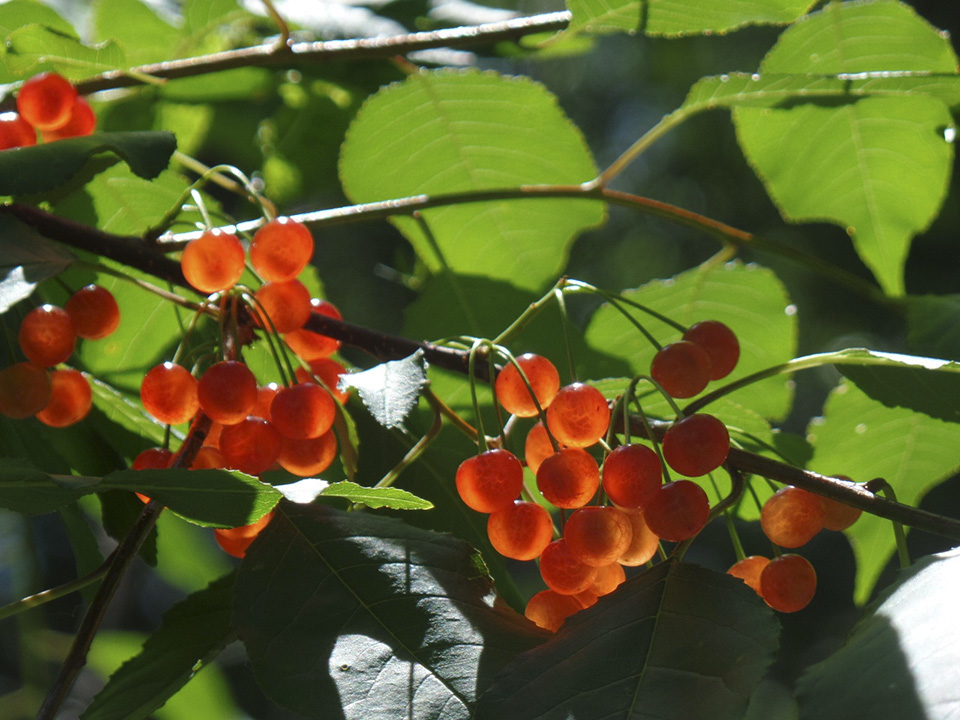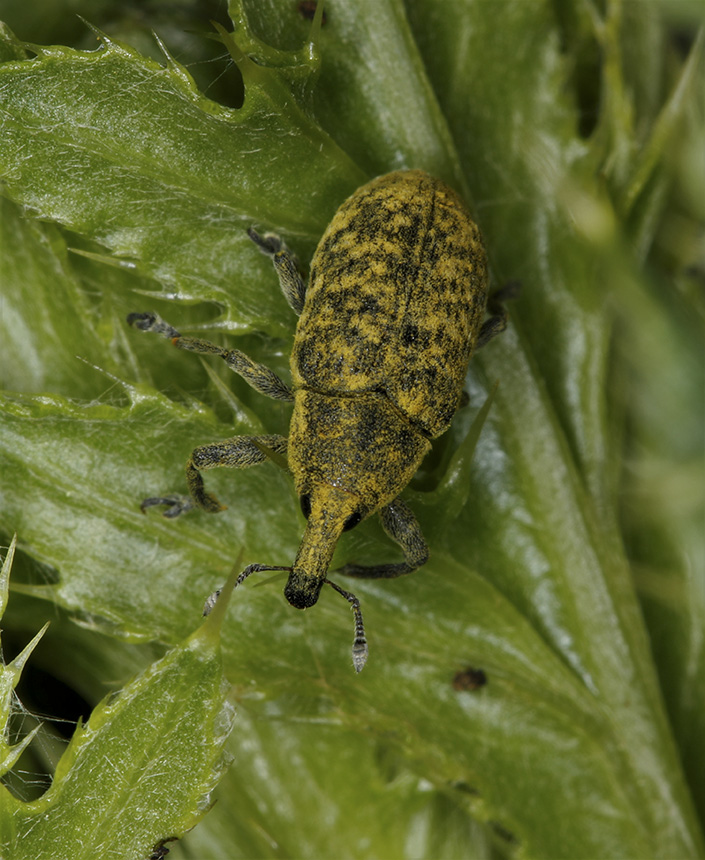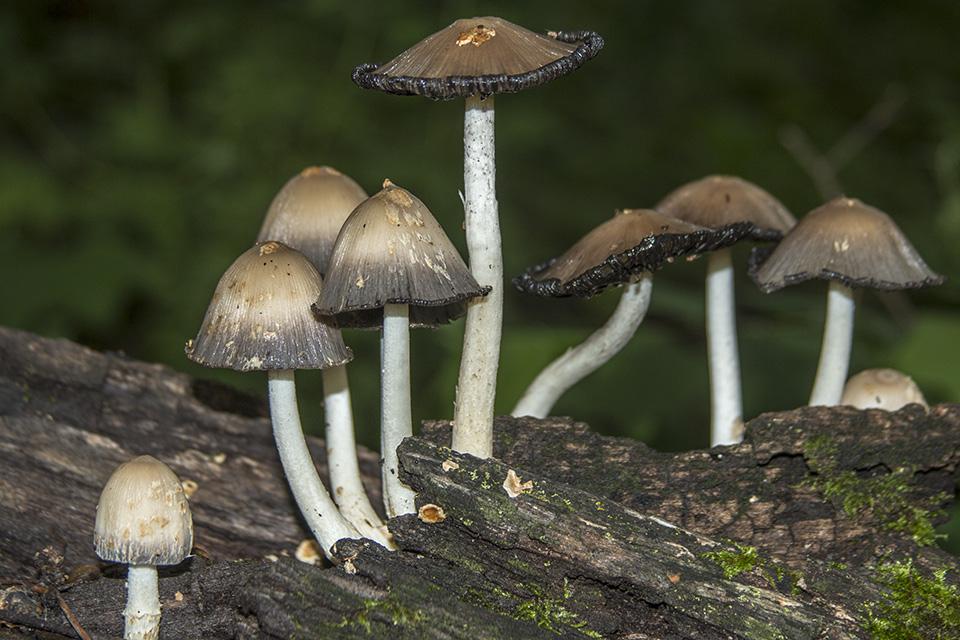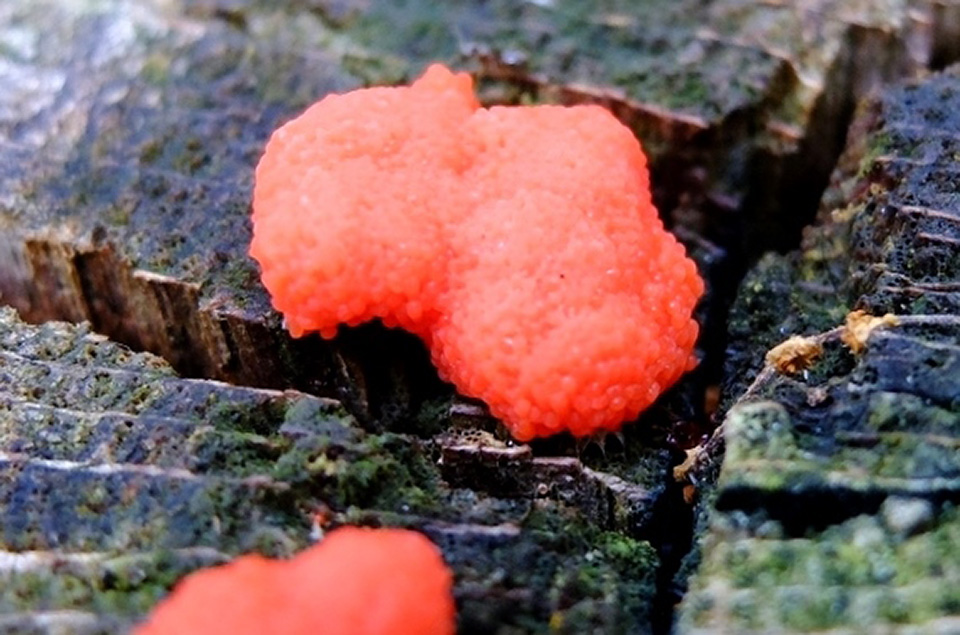Iowa skipper (Atrytone arogos iowa) is a species of special concern in Minnesota. Its populations are restricted to undisturbed tallgrass and shortgrass prairies in the Great Plains. Massive habitat destruction and excessively frequent prescribed burning on managed prairies are major threats to the subspecies survival. It is declining in the northern parts of its range. It is no longer found in 200 western counties it was once known from. It is estimated that there are over 100 remaining populations, but those are small and scattered. It is considered uncommon to rare wherever it occurs. In Minnesota, it is found mostly in the southwest quarter of the state.
Iowa skipper is a small to medium-sized grass skipper. The wings are yellowish-orange with a broad, dark border. The female has a thin black streak in the center of the forewing, but otherwise the wings are unmarked. When at rest, the forewings are held at a 45° angle and the hindwiings are held horizontal, a configuration that resembles an F-15 Eagle fighter jet.
Iowa skipper is similar in appearance to the Delaware skipper (Anatrytone logan), which is much more common. Iowa skipper is distinguished by the lack of any black veining on the upperside of the wings; lack of a black cell end bar on the forewing; wing undersides not as bright; and the hindwing fringe that is usually white, not tan or orange.

